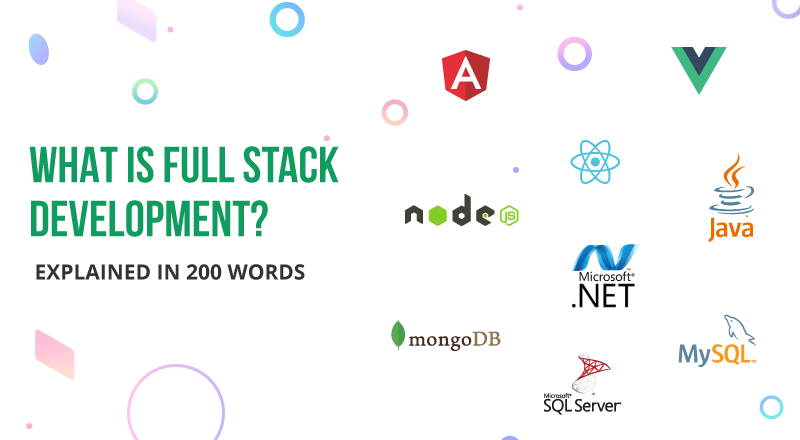

As its name represents, ‘full-stack’ development refers to complete web development including front-end(user interfaces) and back-end(server and databases).
Front-end is the visible part of the website to the end-user through which user interacts and it is responsible for the user experience. Backend focuses on processing and functioning of the website and involves server-side web development and database management.
A full-stack developer must possess skills to develop a complete website with an ability to work on all aspects of building a finished product from design, development to the QA and maintenance.
The revolutionary usage of JavaScript for client-side and also server-side programming has popularized the ‘full-stack’ approach.

Popular Tech Stacks:
Popular languages for front-ends: HTML, CSS, JavaScript
Backend: PHP, C++, Java, Python, JavaScript
Instead of front-end developer and back-end developer separately, full-stack fulfills both the roles by hiring one full-stack developer.
It is a popular model for modern web development where more than one framework, library, and technology is being used to deliver a superior experience.
SPEC INDIA is your trusted partner for AI-driven software solutions, with proven expertise in digital transformation and innovative technology services. We deliver secure, reliable, and high-quality IT solutions to clients worldwide. As an ISO/IEC 27001:2022 certified company, we follow the highest standards for data security and quality. Our team applies proven project management methods, flexible engagement models, and modern infrastructure to deliver outstanding results. With skilled professionals and years of experience, we turn ideas into impactful solutions that drive business growth.
SPEC House, Parth Complex, Near Swastik Cross Roads, Navarangpura, Ahmedabad 380009, INDIA.
This website uses cookies to ensure you get the best experience on our website. Read Spec India’s Privacy Policy